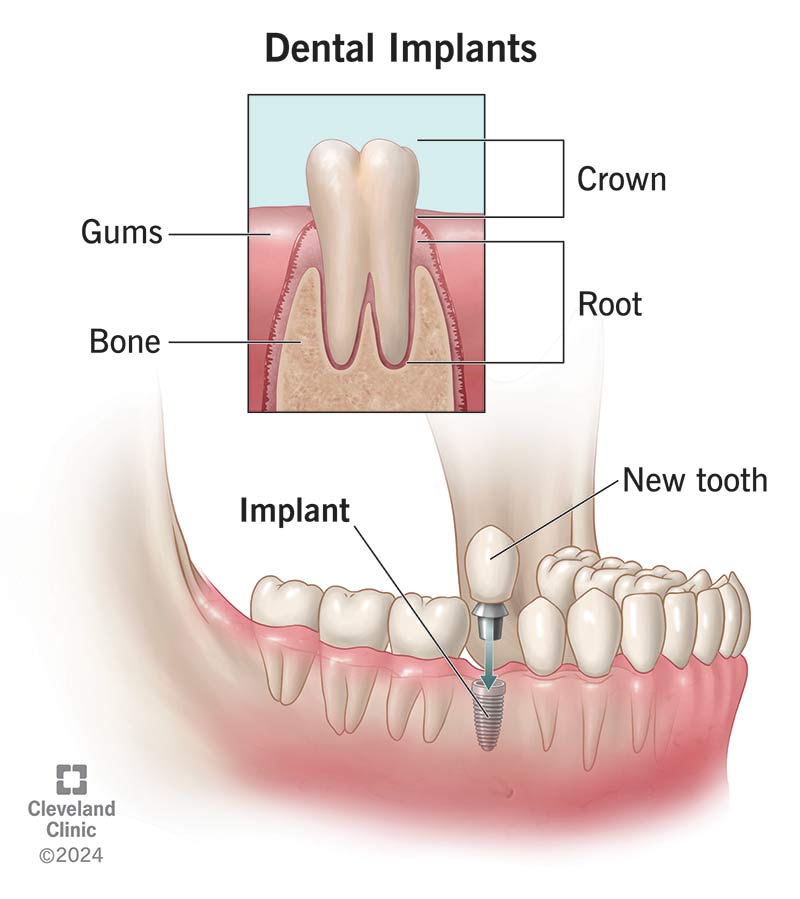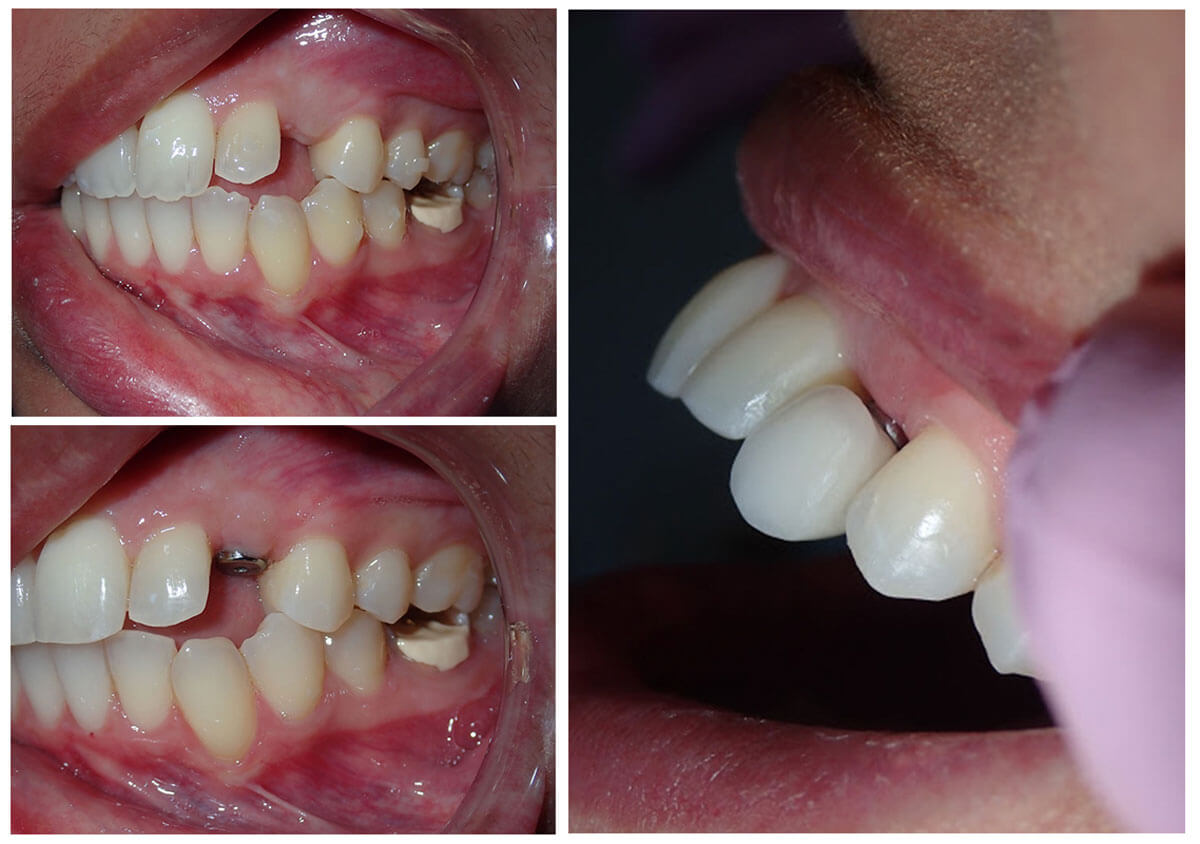The smart Trick of Dental Implants That Nobody is Talking About
The smart Trick of Dental Implants That Nobody is Talking About
Blog Article
The Ultimate Guide To Dental Implants
Table of ContentsSome Known Questions About Dental Implants.Excitement About Dental ImplantsDental Implants for DummiesOur Dental Implants Diaries
are clinical tools operatively implanted into the jaw to restore an individual's ability to chew or their look. They provide assistance for man-made (phony) teeth, such as crowns, bridges, or dentures. When a tooth is lost due to injury or disease, an individual can experience issues such as rapid bone loss, defective speech, or adjustments to chewing patterns that lead to discomfort.
Framework of The Dental Implant System picking dental implants, speak to your oral copyright about the possible advantages and threats, and whether you are a candidate for the treatment. Things to take into consideration: Your general health is an important consider determining whether you are a good candidate for dental implants, how much time it will certainly require to recover, and just how long the dental implant may remain in place.
Cigarette smoking may impact the healing procedure and reduce the long-term success of the dental implant. The recovery procedure for the dental implant body may take numerous months or longer, during which time you commonly have a short-lived abutment in location of the tooth. the oral implant treatment: Meticulously follow the oral hygiene instructions offered to you by your oral service provider.
Some Known Details About Dental Implants
Implant failure can cause the need for an additional operation to take care of or change the dental implant system. Recovers the ability to eat Restores aesthetic look Helps keep the jawbone from shrinking as a result of bone loss Protects the health of the bordering bone and gum tissues Aids keep nearby (nearby) teeth stable Improves lifestyle Damages to bordering all-natural teeth during implant positioning Injury to the surrounding tissues during surgical treatment, such as sinus opening Injury during surgical procedure (for instance, fracture of bordering jawbone) Inadequate function, such as seeming like the teeth do not bite with each other normally An experience that the tooth is loose or twisting in location resulting from an abutment screw loosening up Implant body failure (looseness of the dental implant body) because of systemic infection, which may be most likely in clients with uncontrolled diabetes as a result of neighborhood infection in bone and periodontals sustaining the dental implant body because of postponed recovery, which might be a lot more likely in patients that smoke Problem cleaning the gum tissues around the implant, resulting in inadequate dental health Untreated gum disease Post-surgical pins and needles because of nerve impingement or damages Constantly inform healthcare providers and imaging technicians that you have dental implants prior to any type of magnetic vibration imaging (MRI) or x-ray procedures.
FDA is not conscious of any type of negative occasions reported for MRI or x-ray procedures with oral implants. Oral implants systems are generally constructed from products that adhere to international consensus standards of the International Company for Standardization (ISO) or ASTM International. These criteria have details of what makes a secure material.
Other materials such as gold alloys, cobalt-based alloys, titanium alloys, or ceramic products are sometimes used. The safety profiles of these products are widely known. Dental implant systems are examined according to global agreement criteria. Biocompatibility testing, to reveal that bodily contact with the device does not cause issues like irritability or allergy, becomes part of the evaluation that aids make certain the products in the dental implant system are risk-free and do not trigger adverse results when implanted in people.

All about Dental Implants
Some people are not qualified for oral implant surgical procedure. It is for dental cosmetic surgeons to operate on people with: intense illnessuncontrollable metabolic diseasebone or soft tissue disease or infectionIf these concerns are settled, a person can have the surgical procedure. Dental Implants. In, oral specialists refrain from operating on people with: If individuals with any one of the above go through dental implant surgery, there is a greater risk of the dental implant stopping working
Some people have a jawbone problem that avoids sufficient bone for a dental implant from establishing. The doctor will then make use of a bone or bone replacement to fix and build up the area.
Dental dental implant surgery wikipedia reference is a customized process. Give you time to heal. Affix the blog post and last crown, bridge or denture.
Next off, your doctor will meticulously put the dental implant into your jaw. If your dental implant is near the front of your mouth, your dentist will certainly make a temporary tooth for you to use until you recover.
Getting My Dental Implants To Work
Your company can inform you what to anticipate in your circumstance. Throughout the recovery stage, your jawbone ought to fuse to the dental implant. This process, called osseointegration, is essential for stability and long-term success. This process can take anywhere from 3 to 9 months. In many cases, it may take much longer.
Once your implant heals, your dentist my website can attach the abutment (little connector article) and your last reconstruction (crown, bridge or denture). This typically takes about one hour to complete and may need a second small surgical treatment. You shouldn't feel any type of pain during your dental implant procedure because your copyright will certainly make use of medicine to numb your periodontals.
Report this page